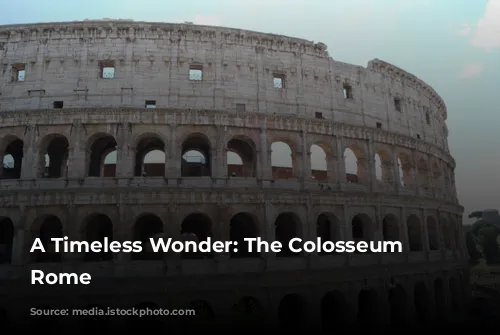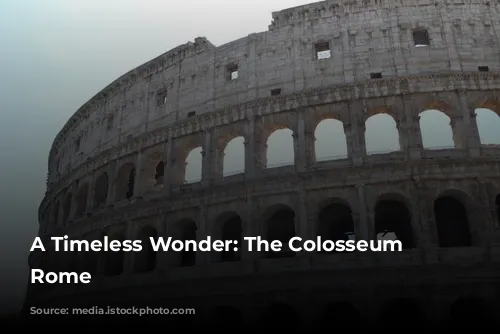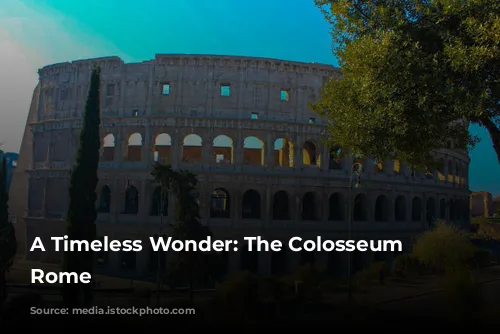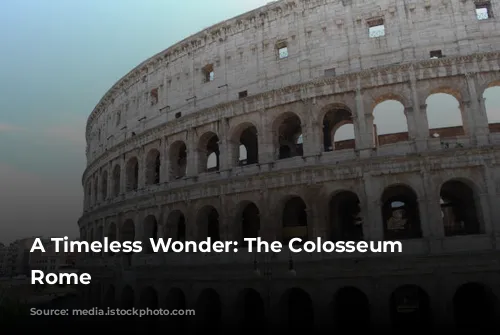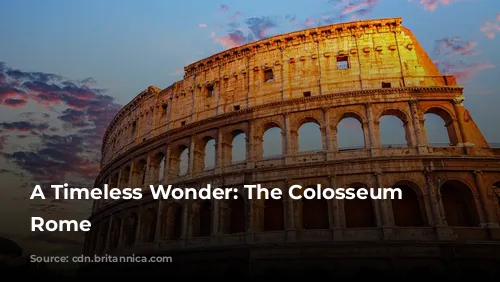The Colosseum, a symbol of Rome’s past glory and a testament to its engineering brilliance, stands as a reminder of the Roman Empire’s enduring legacy. It’s not just an archaeological site but a magnet for tourists from around the world. This remarkable monument to the ancient world continues to attract millions of visitors every year, making it a significant source of revenue for the Italian government.
The Colosseum, Roman Forum, and Palatine Hill combined raked in over $63.3 million (€53.8 million) in 2018, a testament to the enduring fascination with these historical sites. It is no wonder that the Colosseum consistently ranks as Italy’s top tourist attraction. Its enduring appeal lies in its grandeur, its history, and the stories it whispers of a bygone era.
A History of Transformation: The Colosseum’s Many Lives
The Colosseum, originally designed as a grand stage for entertainment, has witnessed a fascinating journey through time, its purpose evolving over centuries. After the fall of the Western Roman Empire, the Colosseum fell into disrepair. Its once-majestic interior became a stage for different dramas.
In the 12th century, the powerful Frangipane and Annibaldi families repurposed the arena into a fortress, a testament to the changing power dynamics of the time. Later, in the late 15th century, the Colosseum was treated as a quarry, its valuable materials stripped away, a sad reflection of its neglect. After a millennium of decline, restoration efforts, spearheaded by state funding, finally began in the 1990s, a renewed commitment to preserving this iconic monument.
The Colosseum: A Legacy of the Flavian Emperors
The Colosseum was conceived as part of a grand plan to revitalize Rome after the tumultuous period of the “Year of the Four Emperors” in 69 CE. This era of political upheaval saw four different emperors rise and fall, leaving the empire in a state of turmoil. The Colosseum, envisioned by the emperor Vespasian, was meant to be a beacon of stability and a symbol of imperial power.
Vespasian, like other emperors before him, recognized the importance of entertainment in maintaining social order. The Colosseum, envisioned as a venue for gladiator fights, animal hunts, and even mock naval battles, was meant to provide the Roman people with a much-needed distraction from the harsh realities of life.

Building an Empire: The Colosseum’s Construction
The construction of the Colosseum commenced under the emperor Vespasian, between 70 and 72 CE. His son and successor, Titus, dedicated the completed structure in 80 CE, a grand event that included 100 days of games and festivities.
The Colosseum’s fourth story was added by the emperor Domitian in 82 CE, further solidifying its status as a monument to Flavian imperial power. The Colosseum’s construction was funded by the spoils of war, specifically from the sacking of Jerusalem in 70 CE by Titus. The use of enslaved Jewish laborers from Judaea in its construction adds a layer of complexity to the Colosseum’s narrative.
A Monument to Roman Engineering: The Colosseum’s Design
The Colosseum is an awe-inspiring example of Roman architectural ingenuity and engineering skill. The structure, an elliptical amphitheater, boasts a majestic design, crafted from stone, concrete, and tuff. It stands four stories tall at its highest point, with a footprint measuring 620 by 513 feet (189 by 156 meters).
The Colosseum’s capacity, estimated at around 50,000 spectators, demonstrates the Roman’s ability to create vast spaces that could accommodate large crowds. This magnificent structure, designed to be an arena for gladiatorial combat, embodied the Roman fascination with spectacle and power.
A Symbol of Power: The Colosseum’s Location
The Colosseum, located just east of the Palatine Hill, occupies the site of Nero’s Golden House, a testament to the emperor’s extravagance and the power struggles that defined the Roman world. The artificial lake that once graced the palace complex was drained, making way for the Colosseum, a deliberate choice that was as much about symbolism as practicality.
Vespasian, whose rise to power began humbly, replaced the extravagant lake with a public arena, a symbol of his commitment to the Roman people and a deliberate rejection of the excesses of his predecessor. The Colosseum’s location, replacing a symbol of Nero’s tyranny with a space for public entertainment, became a tangible representation of a new era in Roman history.
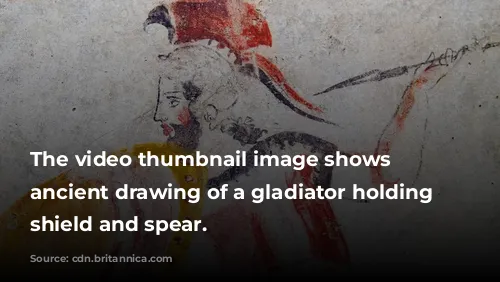
A Marvel of Engineering: The Colosseum’s Construction
Unlike earlier amphitheatres, which were often built into hillsides, the Colosseum is a freestanding structure, a testament to the Roman’s mastery of construction. The Colosseum’s structure relies on a complex system of barrel vaults and groin vaults, showcasing the Romans’ innovative use of materials and architectural techniques.
The Colosseum’s exterior, adorned with engaged columns in the Doric, Ionic, and Corinthian orders, echoes the architectural traditions of ancient Greece, reflecting a Roman fascination with classical art and architecture. This design, a blend of Roman ingenuity and classical influence, became an inspiration for Renaissance architects, solidifying the Colosseum’s lasting impact on the world of art and architecture.
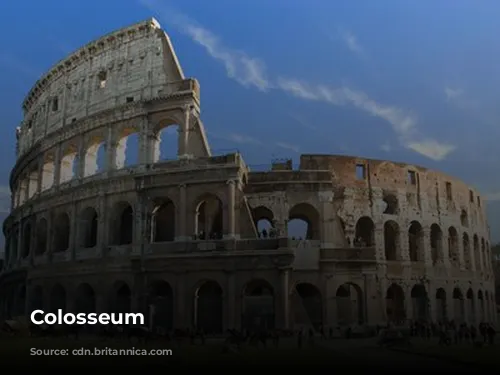
Providing Shelter for Spectators: The Colosseum’s Roof
The Colosseum was designed to offer its spectators protection from the elements, a testament to the Roman’s concern for the comfort of its citizens. A massive retractable velarium, an awning, provided shade for the spectators, ensuring a comfortable experience during the often-intense Roman summers.
The velarium was operated by hundreds of Roman sailors, highlighting the importance of skilled labor and the complexity of engineering involved in its construction. The Colosseum, in its intricate design and meticulous execution, stands as a testament to Roman ingenuity and the dedication of the artisans and laborers who brought it to life.
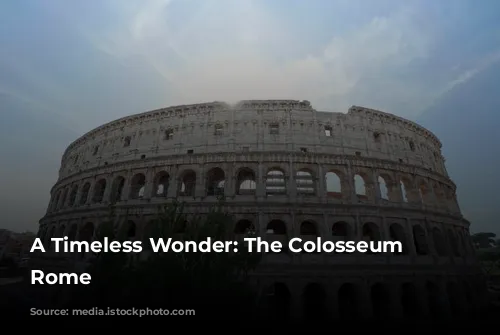
A Stage for Spectacle: The Colosseum’s Events
The Colosseum, a venue for a wide range of entertainment, witnessed a fascinating array of events, from gladiator fights to mock naval battles. It was a stage for the most spectacular events of Roman life, showcasing the empire’s power and its people’s thirst for entertainment.
While the Colosseum was undoubtedly a site of bloodshed, its connection to the martyrdom of early Christians remains uncertain. Nevertheless, the Colosseum stands as a powerful symbol of the Roman Empire’s vastness, its capacity for both brutality and spectacle, and its enduring influence on the world.
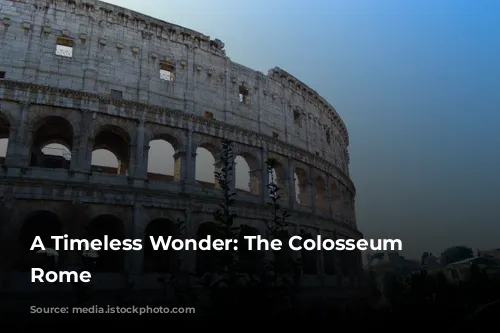
From Glory to Neglect: The Colosseum’s Legacy
The Colosseum, a monument to Roman grandeur, witnessed a dramatic decline after the fall of the Western Roman Empire. The structure, subjected to vandalism, pollution, and earthquakes, suffered significant damage. The once-ornate seats and decorative materials were stripped away, a sad reminder of the neglect and appropriation that marked the Colosseum’s medieval history.
The Colosseum’s transformation into a quarry, a source of valuable building materials, represents a poignant loss of a significant cultural monument. It is a stark reminder of the cyclical nature of history, with periods of both creation and destruction.
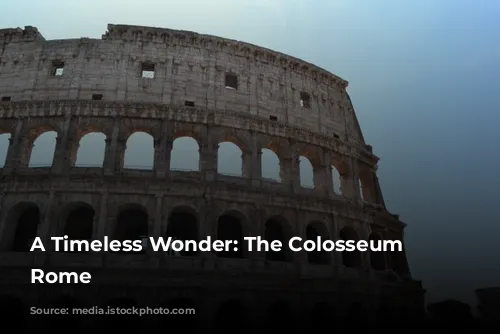
A Rebirth: The Colosseum’s Preservation
The Colosseum, finally recognized as a symbol of Roman history, underwent a period of preservation and restoration. The 19th century saw renewed efforts to preserve the structure, led by Pope Pius VIII. The 1990s witnessed a major restoration project, bringing the Colosseum back to life, restoring its dignity and its place as one of the world’s most iconic monuments.
The Colosseum, now a testament to both Roman grandeur and enduring preservation efforts, continues to attract millions of visitors each year. It is a reminder of the power of history, the importance of preservation, and the lasting legacy of ancient Rome.
